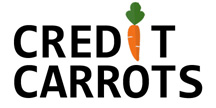Congratulations on looking into ETF’s and index funds. Understanding these key tools are one of the most important steps on your investing journey. What’s the difference between an index fund and an ETF? What are the pros and cons of an ETF vs an index fund? Let’s find out.
To the novice investor, an ETF and an index mutual fund might look exactly the same, but there are important differences as well as definitions that we’ll go over.
What is an ETF?
An exchange-traded fund, or “ETF”, is a tool that lets you buy a large number of securities such as stocks and bonds in a single purchase. For example, if you buy a “tech ETF” then it might include big names such as Facebook, Amazon, Netflix, and Google in the fund.
The really unique thing about ETF’s versus a mutual fund is that you can buy or sell ETF’s throughout the day at the market price – hence why it’s called an “exchange-traded” fund.
One of the downsides of an ETF is that you will have to pay a commission each time you buy and sell – just like a stock. However, if your brokerage doesn’t charge commissions for trading (e.g. Robinhood or WealthSimple) then you are in the clear!
What is an Index Fund?
An index fund is a portfolio constructed to track a market index. A stock market index is a group of stocks that measures the performance of the overall stock market or a specific segment.
For example, you might have a stock index that tracks thousands of companies in the United States, or you might have a stock index that tracks only tech companies in Europe.
As an example, let’s check out the graphs below. The first graph is the S&P 500 index, and the second graph is an index fund that tracks the S&P 500. As you can see, the funds do an amazing job of tracking their index.


So here’s the confusing thing. An index fund can technically be a mutual fund or an exchange-traded fund (ETF). For the purposes of this article, we’re going to be comparing an index ETF to an index mutual fund.
A mutual fund is similar to an ETF in that it holds a bundle of securities such as stocks and bonds. However, the buy and sell orders are only processed at the end of the day with the closing price of the mutual fund. This means if you put in a sell order at 11AM and walk away from your computer, the price you get might be drastically different than what you thought you were going to get.
ETF vs Index Fund
Now that we know what ETF’s and index mutual funds are, which one should you buy? As with most investing questions there is no one-size-fits-all answer. Here is a comparison between the two types of investments to help you decide.
| ETF | Index Mutual Fund | |
|---|---|---|
| Management Expense Ratio (MER) | ~.10% | ~0.40% |
| Auto-Buy | Not always available depending on your investment brokerage | Always available |
| Trading Cost | $0-$10 per trade | $0 |
| Maneuverability | Can be bought and sold at any time during market hours | Can only be bought and sold at the closing price for the day |
| Buying and selling | You need to buy or sell the ETF from other traders | The mutual fund company will buy and sell shares of the fund |
If you’re completely new to investing, then we would suggest that you start out by purchasing an index mutual fund on an auto-buy plan. An example would be automatically contributing $25 a week to an S&P 500 index mutual fund. This will allow you to dollar-cost average into your position which will help shield your against wild price fluctuations.
Once you get a good feel for index fund investing, then switch over to ETF’s as they are a lower cost solution.
We are not financial advisors, and no content on this site should not be taken as financial advice. No guarantee can be made if you invest based on the information provided on this blog. We make no warranty of any kind regarding the blog and/or any content, data, materials, information, products or services provided on the blog.












Article Comments